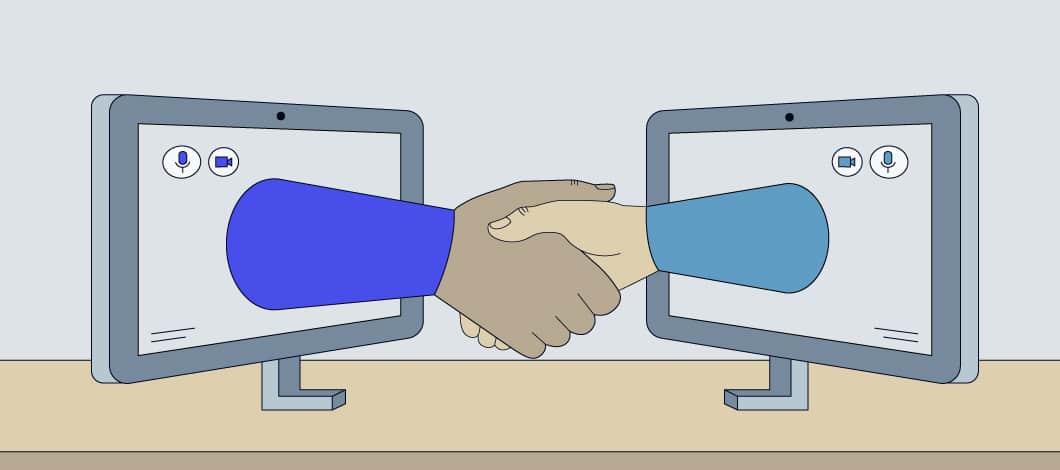Remote hiring is becoming the new normal as more businesses go virtual.
Learn how to hire remote employees effectively by applying these best practices. Here are 10 tips to help you hire the perfect remote staff:
1. Assess Your Remote Hiring Needs
A preliminary step in hiring remote employees is determining which positions need to be filled. You can evaluate this by conducting a skills gap assessment.
Start by listing the functions of your department or company, the roles and tasks required to perform these functions and the skills needed to fulfill required roles and execute required tasks. Compare this with a list of your existing staff’s job descriptions and skill sets. This will pinpoint where you have a skills gap that needs to be filled.
After identifying your skills gap, the next question to consider is whether it would be more effective to fill the gap with existing employees or recruits who will work on-site versus remote hires. In some cases, you already may have the in-house talent needed to take over a role or task. In other cases, you may deem it better for a position to be filled by a hire who will work on-site. Eliminating these options will identify which roles and tasks require new remote hires.
2. Create Ideal Candidate Profiles
Once you’ve identified roles and tasks which require a new hire, you can create a profile for an ideal candidate to fill a position responsible for these items. Build an ideal candidate profile by considering questions such as:
- What job title would best fit the roles and tasks which must be handled by a new hire for this position?
- What hard skills should a qualified candidate possess?
- What soft skills should they have?
- What job experience should they have in their background?
- How many years of experience should they have?
- What type of educational background should they have?
- Do they need to have any special certifications or licenses?
Use these types of questions to develop an itemized list of what qualities an ideal candidate for a position should possess.
3. Design a Candidate Scoring System
When you hire remote workers, you can enhance the effectiveness of your candidate profiles by quantifying them through a numerical scoring system. This will lend objectivity to your assessment of candidate qualifications. It also will help you automate the process of screening candidates, allowing you to screen a larger number of candidates in less time and accelerating the recruitment process.
To create a candidate scoring system, assign a numerical value to each qualification listed on your ideal candidate profile. You can then score candidates by tallying up their score for each qualification category.
If you want to prioritize certain qualifications, you can give them a higher numerical value than other items. For example, you might assign a value of 3 to top-priority items, 2 to mid-priority items and 1 to low-priority items.

4. Develop a Compelling Job Offer
To attract and hire top talent, you will need to develop an appealing job offer. A compelling job offer should include both the level of compensation and the type of benefits sought by your target candidate pool. This may include standard benefits such as health-care and retirement savings plans as well as fringe benefit perks such as flexible hours, paid parental leave or employee discounts.
Finding out which benefits will appeal to your target candidate will take some research. As a starting point, the U.S. Bureau of Labor Statistics offers a number of online tools you can use to research statistics on pay and benefits and search data by occupation, industry, geographic area and demographic characteristics. You can follow up with additional research through other means such as job sites, human resources sites and surveys.
5. Write a Targeted Job Description
To promote your job offer effectively to your intended audience, you will need to craft a job description geared towards your ideal candidate. A well-designed job description should include:
- Keywords that your ideal candidate would be searching on to find the type of position you’re advertising
- A title accurately summarizing your job opening and including your most important target keyword phrase
- A description of your position’s job title
- A list of the position’s responsibilities, emphasizing the most important duties by listing them first
- A list of job qualifications, emphasizing the most important qualifications by listing them first
- A summary of compensation and benefits, highlighting the ones which will have the greatest appeal to your target candidate pool
Matching the wording of your job description to your target candidate can significantly increase the quality of the candidates who respond to your ad. This will reduce time spent weeding out unqualified candidates while streamlining the process of finding the right hire for your position.
6. Promote Your Job Opening
Once you have a job description written, you can start promoting your job opening. You can increase the success of your job offer promotion through your selection of the type and number of promotional channels you use.
Options include:
- Word-of-mouth referrals
- Internal job board postings
- Referrals from other employees
- Networking within your industry and among business contacts
- Your website
- Staffing agencies
- Employment-oriented social media sites such as LinkedIn
- Job-search sites such as Indeed
Most of these promotional channels are free, but a few require an investment. Sites such as LinkedIn have premium tools that can be used to improve your ability to connect with qualified candidates.
Recruitment agencies already have pools of candidates in their database and resources for attracting additional candidates. If you need to expand the reach of your talent pool and accelerate the speed of your hiring process, hiring a staffing agency may be your most efficient option.
7. Automate Your Applicant Tracking Process
You can increase the efficiency of your recruitment strategy by using automation effectively. One of the best tools you can use is applicant tracking software (ATS).
An ATS program provides a database you can use to:
- Store information about applicants and resumes
- Search applicant data
- Filter data for matches with job qualifications
- Score candidates
- Track candidates as they progress through the application process
- Schedule interviews
ATS programs range from solutions with freeware options such as iKrut to pay-only products such as Indeed’s Hire tool. Enterprise solutions tend to have additional features, such as. Billing may be priced by the number of job postings or by the number of users.

8. Assess Qualified Candidates
As applications begin coming in, the next step is evaluating candidates to determine how well they meet your qualifications. You can improve the efficiency of your assessment process by taking it in stages:
- Your ATS system can sort applicants by using your ideal candidate profile scoring system, pushing qualified applicants to the front of your evaluation process
- You can then review your highest-scoring applicants to determine which ones to interview first
- Schedule interviews, along with any applicable skill tests, such as software tests
- Review interviewees to identify which ones merit a follow-up interview or job offer
With remote workers, interviews may be conducted by video chat if your interviewer wants to assess body language or impart a stronger sense of presence. This may be useful for evaluating soft skills, such as communication skills. It also can strengthen employee engagement by starting relationships with new hires off on a more personal basis.
You can streamline the interview process by using a scoring system based on your candidate scoring system. Standardize your interview questions to support your scoring system. This will make it easier to assess applicants quickly and fairly.
9. Negotiate Job Offers
After identifying your most qualified candidates, the next step is to extend job offers. In some cases, you can win over a top candidate by customizing your offer to meet their needs, so be prepared to negotiate.
Items you can negotiate can include compensation, benefits and perks. In some cases, candidates may be more swayed by benefits or perks than by a higher salary offer. For instance, a candidate who has children or elderly relatives to care for at home may be more open to an offer if you accommodate them with flexible work hours.
10. Plan an Efficient Onboarding Process
A smooth onboarding process can help cap off an effective hiring process. The more efficient your onboarding process, the sooner new hires can become productive employees. On the other hand, snags in your onboarding process can increase the risk that hires find another job before completing onboarding or that they become dissatisfied quickly and leave soon after hiring.
You can improve your onboarding process by taking a number of steps to assist new hires in their transition to your company:
- Create an onboarding checklist and standardized onboarding procedures
- Use onboarding software to automate your onboarding procedures
- Schedule any required drug tests
- Assign a contact person or mentor to new hires
- Introduce new hires to supervisors and coworkers
- Guide employees through the process of applying for benefits with your human resources team
- Set up digital accounts for new hires
- Schedule training sessions for employees to learn essential procedures and software
Creating a smooth onboarding process will set the stage for a successful hire and a strong relationship with your new employee.
Invest in Remote Recruiting to Empower Your Workforce
Following these steps will increase your odds of hiring a remote employee who meets your qualifications while helping you avoid extra expenses that can result from hiring workers who aren’t a good fit for your needs.
Dedicating the time and resources to hire the right remote workers can require some investment, but it will pay off in productivity gains and decreased turnover rates and rehiring costs. If you need financing to help you cover the costs of recruiting qualified remote workers, consider applying for small business financing options such as a working capital loan.










